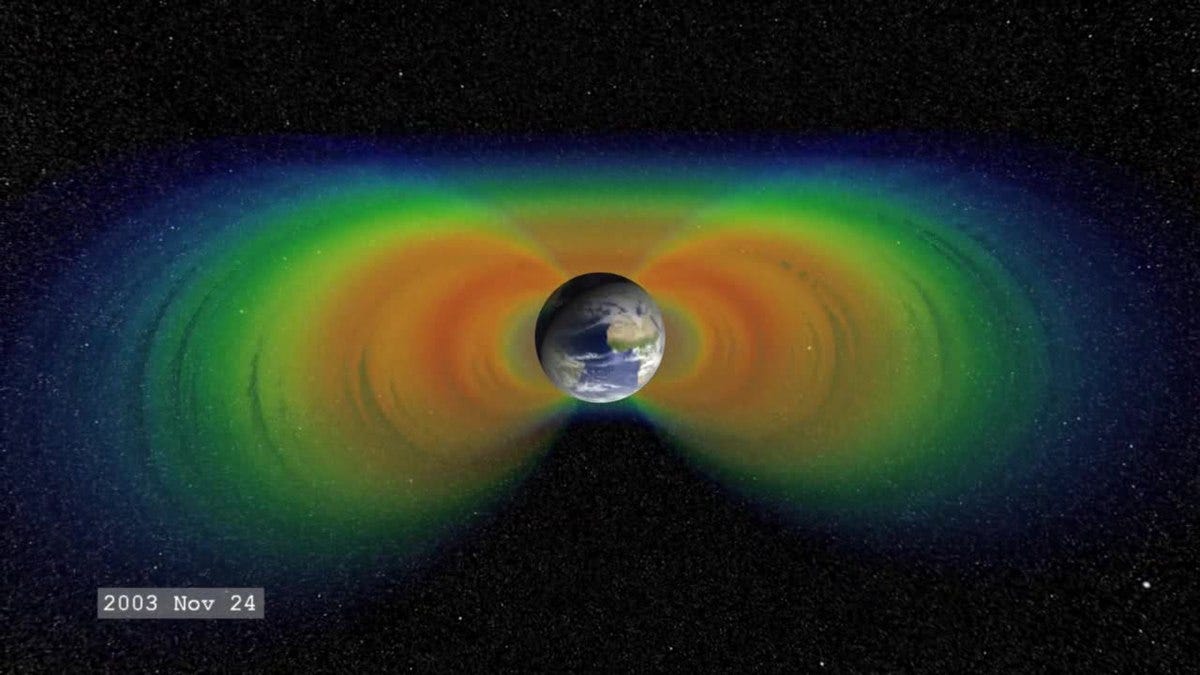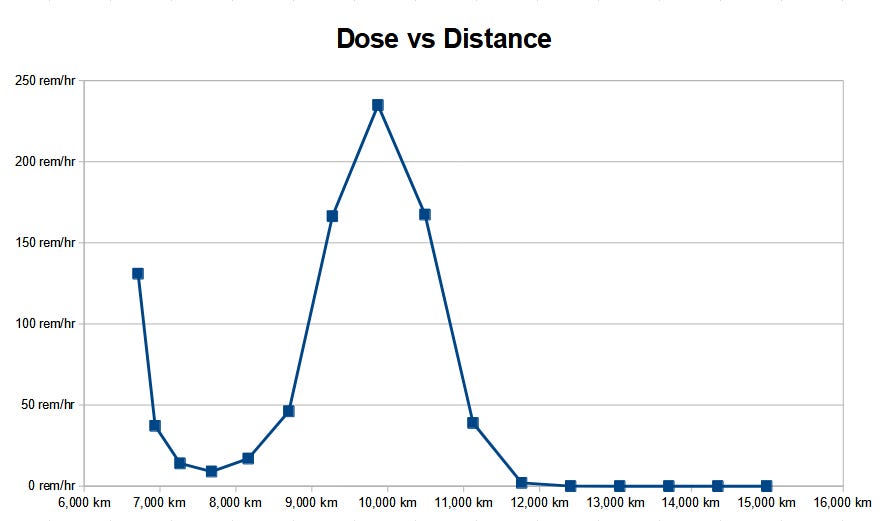Van Allen Belts - An obstacle to a manned moon mission?
Ballparking the numbers with free simulations
Do the Van Allen belts present an obstacle to manned space flight? The sceptics think so. NASA claims the Apollo astronauts only received minimal doses, equivalent to a chest x-ray.
Present day astronaut Kelly Smith certainly makes them sound scary. An area full of dangerous radiation that presents challenges we must solve before we can send people through this region of space:
What is the truth? Get ready to tap into your inner NASA fanboy as we examine flight paths, magnetic fields and proton models.
Apollo 11 Flight Path
Apollo 11 followed a translunar injection flight path. This was accomplished by an initial rocket burn which pushed the craft out of earth orbit, and final one to push it into lunar orbit. Between the burns, its motion can be modeled by Keplerian orbit elements.
Blogger The Oikofuge has helpfully translated Apollo 11’s flight path into these elements. I’ve made some unit changes so you can drop these right into a simulation.
The elements can be used to fully describe the orbit. Free software such as Satellite Orbit Simulator can simulate these orbits. Note how cleanly the “satellite” (Apollo spacecraft) meets up with the moon. Cool stuff:
This same software can output the flightpath to an excel file for further analysis.
Magnetic Fields
The magnetic fields can be described, or simplified rather, by a Dipole model. The belts are oriented to magnetic north, not geographic north. Magnetic north varies over time - its value can be looked up for an individual year.
With a known magnetic north location, a geometric model can be constructed to convert between geographic and magnetic coordinates. This conversion can be applied to the timestep values in the excel file from the orbit simulation. Note how a flightpath was selected that utilizes the tilt of the magnetic pole to minimize exposure to the radiation belts:
With known geomagnetic coordinates, an L-shell value can be calculated for each point of the simulated orbit:
Proton Radiation Energy and Density
Proton radiation is the most damaging radiation present in the Van Allen belts. It is found primarily in the inner belt. Protons with energy greater than 10 mV can penetrate the thin hull of the Apollo spacecraft.
Simulation tools such AP-8 and AP-9 describe the levels of this radiation present in the belts. AP-9 did not like the Apollo orbit because it crashes back into earth.
The AP8 model takes the L-shell values and calculates proton fluxes. Jarrah White explains how to convert proton fluxes to equivalent does in Roentgen equivalent man:
With proton fluxes converted to equivalent rem/hr doses, a dose rate can be constructed for the flight path. The peak doses come roughly 14 minutes after translunar injection, at around 10,000 km from the center of the earth.
Summing everything up reaches a total of about 27 rem for the outbound trip, or an average rate of 54 rem/hr. LD50 is about 400-450 rem.
According to a MIT document, the maximum rem exposure from a space shuttle mission was about 25 rem, which was also the yearly occupation exposure limit in the 1950s.
NASA claimed comically low radiation doses for Apollo. Without knowing the type of radiation, these can’t be be directly converted to rem, but 5x is a starting point for a guess. So ~6 rem for the whole mission, for Apollo 14, the worst case.
So in conclusion, a ballpark estimate shows dramatically higher doses than claimed by NASA, but not so high as to cause acute radiation syndrome. And AP8/AP9 are industry standard tools for satellite design.
Let me leave with a quote from Van Allen himself, in Volume 200 of Scientific American, March 29:
Our measurements show that the maximum radiation level as of 1958 is equivalent to between 10 and 100 roentgens per hour, depending on the still undetermined proportion of protons to electrons. Since a human being exposed for two days to even 10 roentgens per hour would have only an even chance of survival, the radiation belts obviously present an obstacle to space flight. Unless some practical way can be found to shield space travelers against the effects of the radiation, rockets can best take off through the radiation-free zone over the poles.
1 roentgen is roughly equivalent to 1 rem, so his estimate of 10-100 roentgens/hr is very close to the 54 rem/hr calculated using the simulation methods above. And the official flight path followed his suggestion of hugging the poles.
In conclusion, the issue of travel through the Van Allen belts is a bit of a red herring. Not dangerous enough to prevent travel to, or return from, the moon.












What about beyond the belts? Isn’t the Moon itself bombarded with cosmic rays and solar radiation, not to mention micrometeorites?
Nice summary. Its crazy that with the tools available at the time the estimate of R/hr was not offby an order of magnitude.